
Gallery Of Homes: Kelley
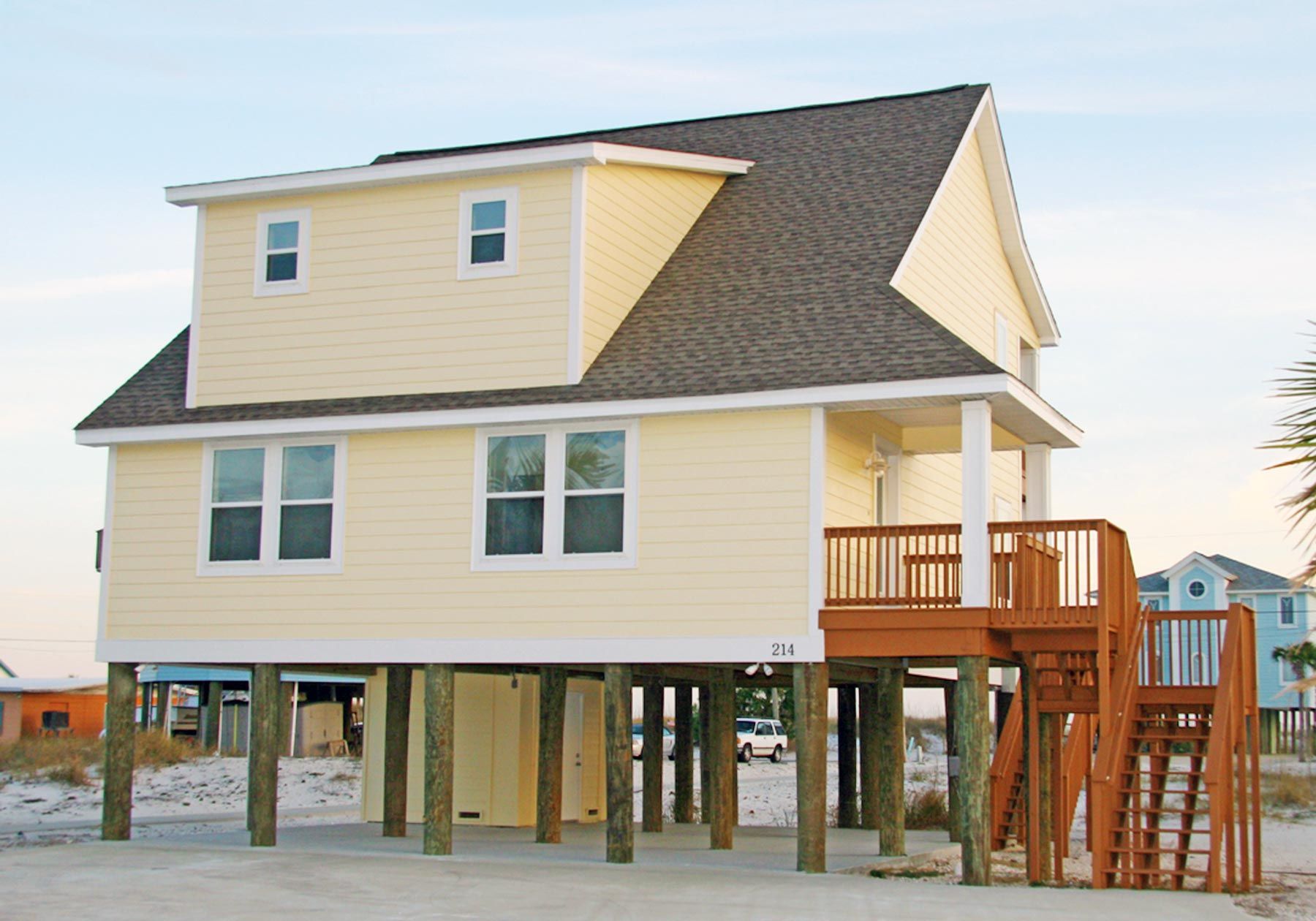

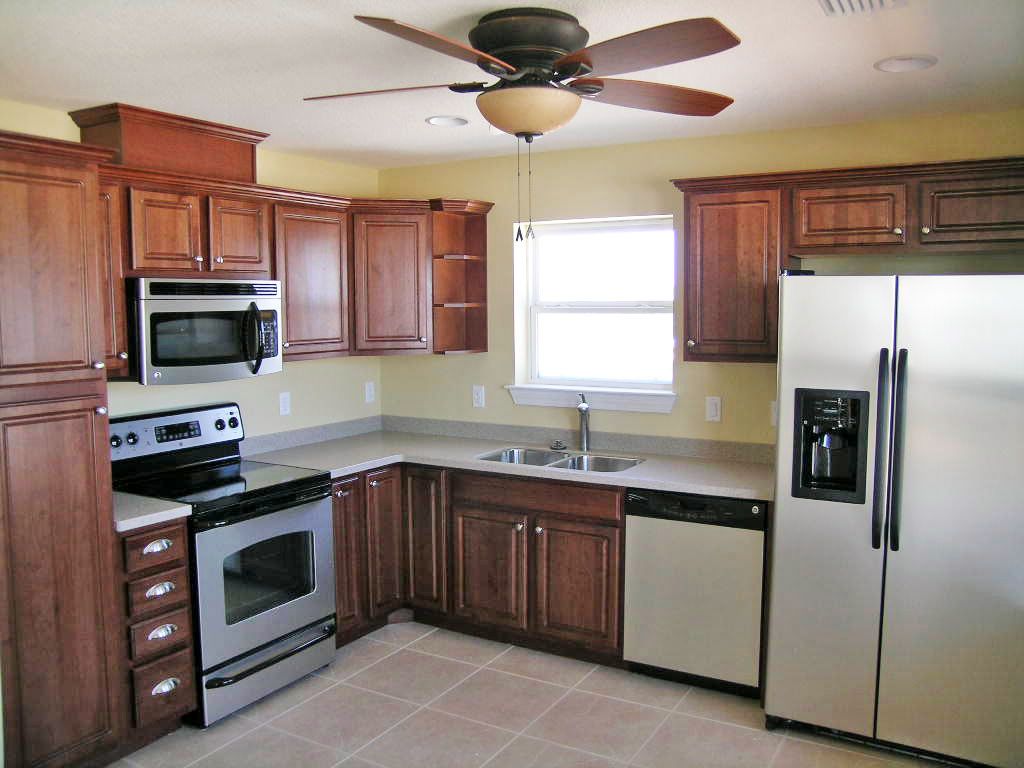

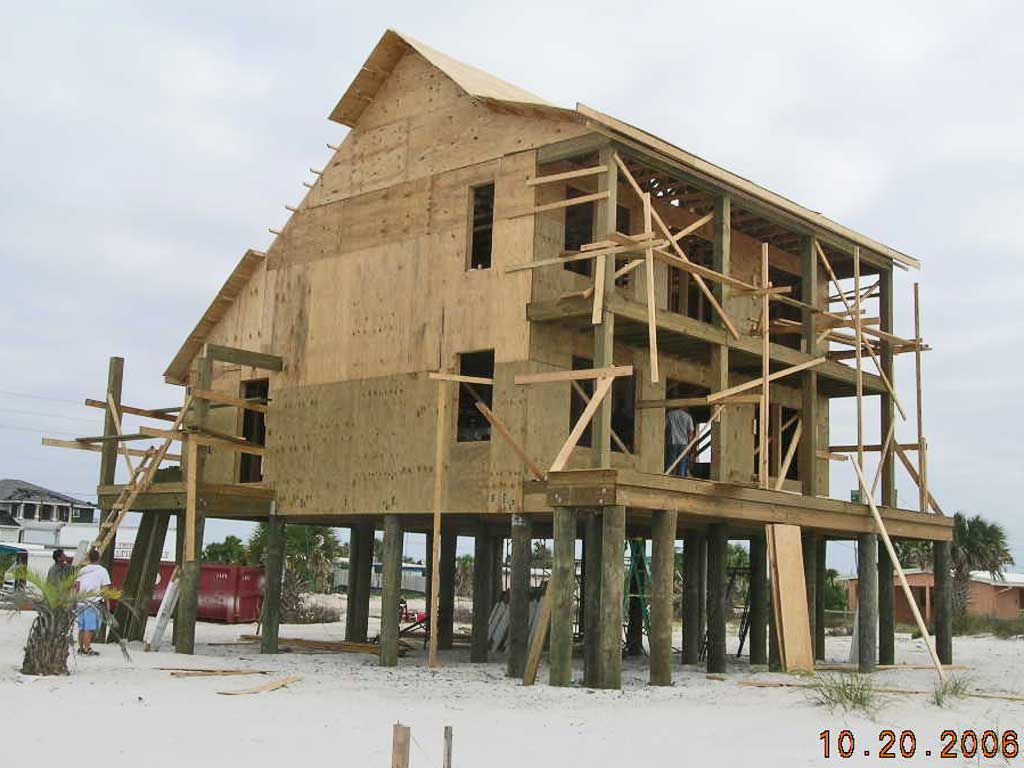
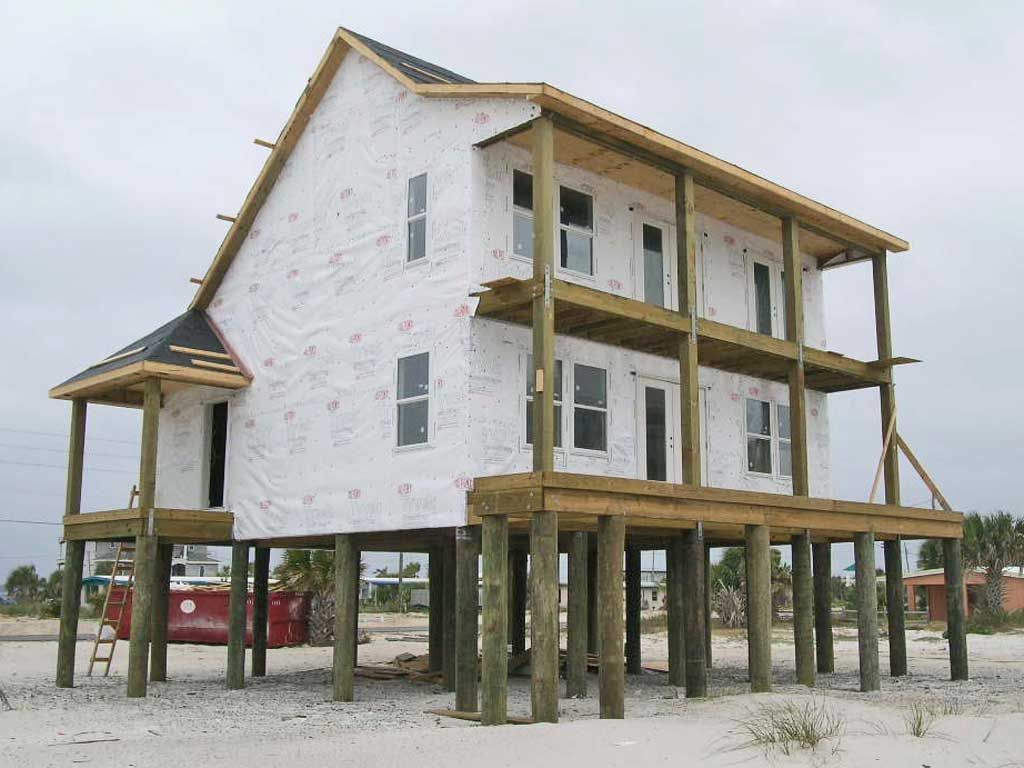
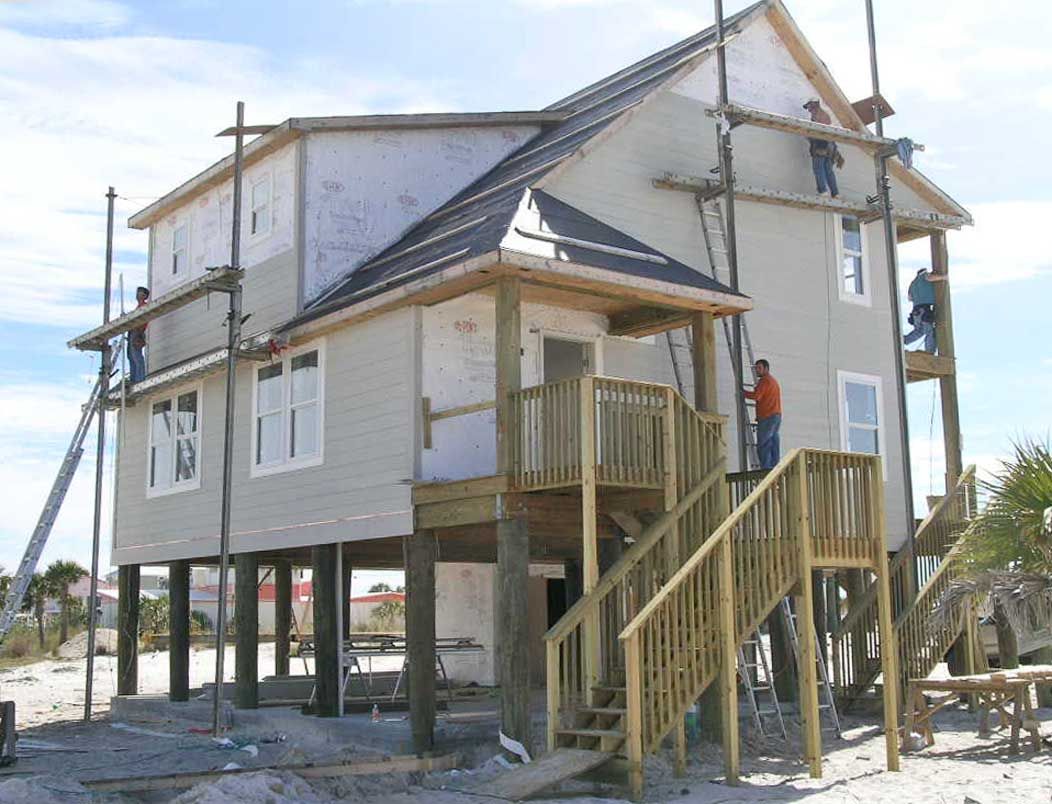

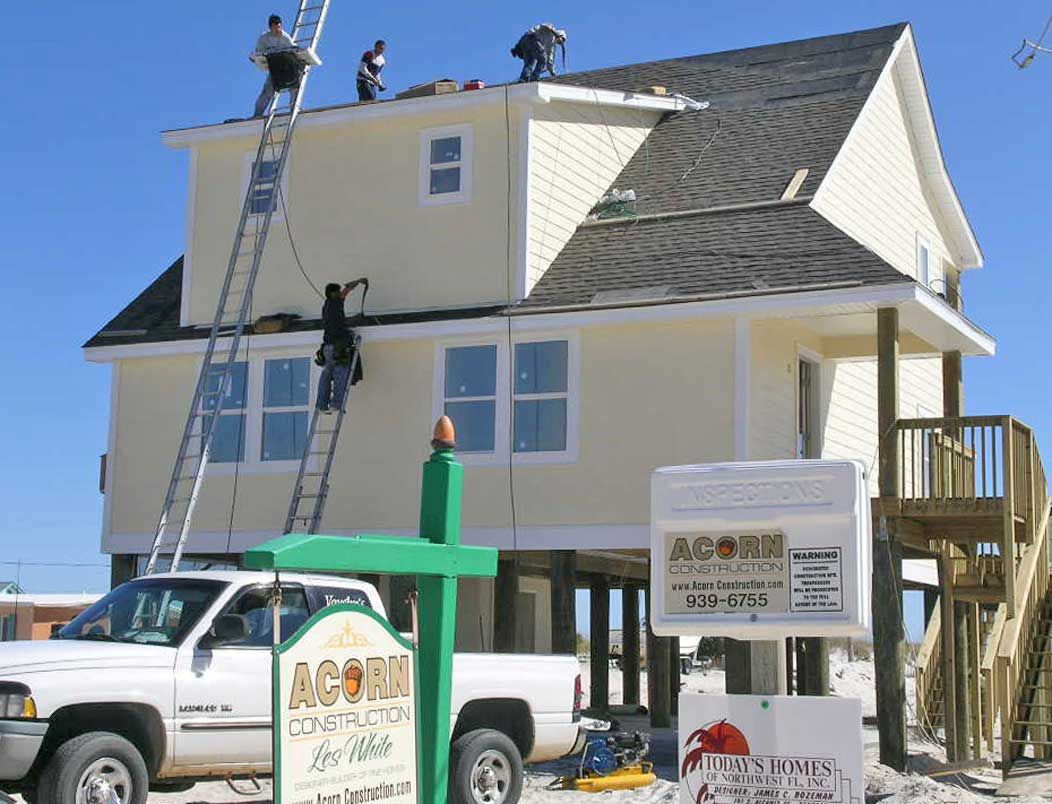


Kitchen
The pilings are being jetted down to about 20' then hammer driven an additional 5'.
We used pressure treated plywood for the first run of wall sheathing to provide more protection from moisture damage at the most vulnerable areas. Note the 2x4's sticking out at the roof line. These are look outs which are designed to reinforce the cornice against wind damage.
I used Tyvek brand house wrap. This secondary moisture barrier acts like a rain coat for the building. It must be installed properly to do its job. All seams properly lapped, taped, fastened, and sealed according to the manufacturer's instructions. Notice the wall flashing along the top of the front porch roof. This is copper wall flashing which kicks out from the wall to make sure water doesn't get in behind the siding. This is a common entry point for water getting in behind the siding and rotting out the walls. All deck flashing is copper as well. Galvanized flashing lasts about 5 years, aluminum about 7 years in salty environments, not suitable for coastal construction. Only copper and stainless steel hold up in the long term.
I used hardiboard siding for maximum resistance to hurricane force winds. All nails and exposed clips and bolts were stainless steel. Nothing else holds up to the salty environment.
We used Sherwin Williams primer and paint specifically formulated for use with hardiboard siding providing maximum adhesion and durability.
Installing 30 year architectural shingles over the peal and seal subroof. The subroof was rained on several times before the shingles went on so we were able to verify the watertight integrity of the subroof and wall flashing.
We had to use a line pump to pour this driveway.
Osprey

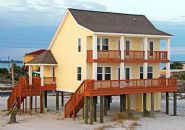





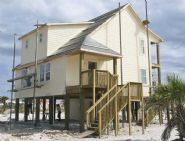

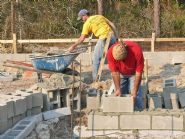

Features
- 1843 sf living area
- 4 BR, 3 bath, living room, eat-in kitchen
- Storm-tuff features
- Vinyl impact glass windows
- Hardiplank siding
- Composite exterior decking
The Kelley residence
I built this Jim Bozeman design for the Kelleys to vacation in and rent out during the summer. Their old block home was destroyed by hurricane Ivan in 2004.
"Our friends told us it was going to be a nightmare trying to build a beach home from Atlanta. They could not believe how well the job went along without stress when we told them how it was going. Les kept us up to date with plenty of pictures and emails. We did most of our amenity shopping online or in Atlanta. It was really a pretty smooth operation. "
~ Al Kelley


